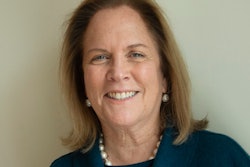As the country marks the one-year anniversary of the killing of George Floyd by former police officer Derek Chauvin, questions about where the movement for social justice will go from here continue to abound. Legislative progress in directly addressing the plight of Black men like Floyd, has been an uphill battle. The George Floyd Justice in Policing Act has been passed by the U.S. House of Representatives but has not yet been voted on in the Senate.
The primary piece of national legislation that was passed as a direct response to Floyd’s killing was a bill that established the Commission on the Social Status of Black Men and Boys. The legislation was introduced in the House by Democratic Congresswoman Frederica Wilson and in the Senate by Republican Senator Marco Rubio. It was passed by both Houses of Congress in July of 2020 and was signed into law by former President Donald Trump in August of 2020.
According to a press release from Congresswoman Wilson’s office, the bill “establishes a permanent, bipartisan commission within the United States Commission on Civil Rights. Its 19 members will include congressional lawmakers, executive branch appointees, issue experts, activists, and other stakeholders who will examine social disparities affecting black men and boys in America. Based on its findings, the commission will issue policy recommendations to Congress, the White House, and federal agencies.”
This Commission will elevate issues like disparities in “education, criminal justice, health, employment, fatherhood, mentorship, and violence” and create an infrastructure to press toward the goal of better understanding and eventually eliminating the conditions that have made it extraordinarily difficult for an unacceptably high number of black males to become upwardly mobile.
The implications of the Commission for higher education may be manifold. One potential way that it could be utilized is as a “railroad” to carry best practices for access, retention, and completion for Black males in higher education to institutions across the country. The Commission presents a new opportunity to examine what is working and fortify those practices, programs, and procedures with resources to incentive the expansion of these infrastructures of opportunity.
There may not be one template that works everywhere, but there are sets of common practices and principles that have shown patterns of sustained success and scalability that can be molded to fit the needs of different localities and institutions. The Commission can complement and help to expand existing efforts and build the capacity of those who are already engaging in the space. A coordinated and concentrated effort like this with the backing of multiple federal departments and stakeholders can push through barriers that typically prevent needed expansions of successful systems.
Higher education institutions can be the linchpin of these efforts because of their ability to provide multiple connection points for both Black men and boys. Higher education is still the most accessible ladder out of poverty. Colleges, universities, and trade schools should be partners with the work of the Commission. They are a direct feeder for boys that are exiting high school, a hub for the upskilling of men to become or remain economically relevant, and a potential partner for K-12 schools and community organizations that serve every age group of boys and men.
















